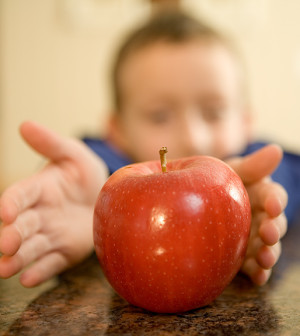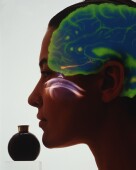- Navigating Your Midlife Crisis: Embracing New Possibilities
- City Raccoons Showing Signs of Domestication
- Mapping the Exposome: Science Broadens Focus to Environmental Disease Triggers
- One Week Less on Social Media Linked to Better Mental Health
- Your Brain Changes in Stages as You Age, Study Finds
- Some Suicide Victims Show No Typical Warning Signs, Study Finds
- ByHeart Formula Faces Lawsuits After Babies Sickened With Botulism
- Switch to Vegan Diet Could Cut Your Greenhouse Gas Emissions in Half
- Regular Bedtime Does Wonders for Blood Pressure
- Dining Alone Could Mean Worse Nutrition for Seniors
Children with Autism Respond Differently to Smells: Study


Children with autism spectrum disorders appear to respond to stinky smells differently from children without autism, a new study found.
The difference was pronounced enough that researchers could tell who had autism and who didn’t about 80 percent of the time based only on “sniff responses.”
“The authors have hit upon a novel way of testing differences between children with autism and those without that indeed seems to suggest marked differences in how autistic children process odors,” said Dr. Glen Elliott, chief psychiatrist and medical director of Children’s Health Council in Palo Alto, Calif.
“Since we know that many children with autism are hypersensitive to touch, sound, taste and visual stimuli, it is especially interesting that they seem not to be responsive to odor in the same fashion,” said Elliott, who was not part of the research.
The study may hold clues to the social difficulties children with autism have, the authors suggest.
“The sense of smell is in fact a major component of human social interaction,” said lead author Liron Rozenkrantz, a Ph.D. student at the Weizmann Institute of Science in Israel. “Given that olfaction is probably altered in autism, could it be that this is a part of the social challenge in autism?”
Results of the study appear in the July 2 issue of the journal Current Biology.
The researchers compared 18 children with autism spectrum disorders to 18 typically developing children. All of the children sniffed pleasant and unpleasant odors while watching cartoons. They were exposed 10 times to pleasant smells, such as rose or shampoo scents. They were also exposed 10 times to unpleasant odors, such as sour milk or rotten fish.
The researchers measured each child’s “sniff response.” This included how much they sniffed, their highest rate of breathing in, their average rate of breathing in and how long they sniffed.
The children without autism changed the way they sniffed the bad odors within 0.3 of a second, the researchers found. They very quickly took smaller sniffs of the bad smells and larger sniffs of the sweet smells. The children with autism, however, continued sniffing without any changes, the study revealed.
Using only the children’s responses to bad smells, researchers were able to identify 17 of the 18 typically developing children and 12 of the 18 children with autism, the study said.
“This raises the hope that these findings could form the base for development of a diagnostic tool that can be applied very early on, such as in toddlers only a few months old,” Rozenkrantz said. “The appeal in using this measure of sniffing in response to odorants is that it is nonverbal and requires no task instructions, which is specifically relevant when studying autism.”
Such early diagnosis could mean more effective interventions, she said, but she adds that a smell test is nowhere close to being used in this way yet. In addition, the youngest participants in this study were 4 years old, the study noted.
“There is a strong effort to find a simple, noninvasive test for identifying autism in younger and younger populations,” Elliott said. “If researchers could show that infants and toddlers have similar robustly different responses, it would be of considerable interest.”
Another finding was that the children who adjusted their sniffing the least when they smelled rotten fish or sour milk were also those with the most severe symptoms of autism, particularly in terms of social difficulties.
Dr. Andrew Adesman, chief of developmental and behavioral pediatrics at Cohen Children’s Medical Center of New York in New Hyde Park, N.Y., remarked, “This study is in many ways provocative, since it suggests, in children with an autism spectrum disorder, that there may be a previously unappreciated relationship between their response to smells and their impaired social functioning.
“In some ways, this study raises more questions than it answers,” said Adesman, who was not involved with the study.
The study’s findings do not help explain the cause of autism spectrum disorders, Elliott noted. But he said the findings may open up new avenues of research into why children with autism often respond so differently to environmental cues.
The next step in the researchers’ work may be to explore whether the differences in sniffing relate to social difficulties, Rozenkrantz said. The authors also wonder if younger children, even newborns, might show these differences in sniff responses.
More information
For more about autism, visit the U.S. Centers for Disease Control and Prevention.
Source: HealthDay
Copyright © 2025 HealthDay. All rights reserved.










